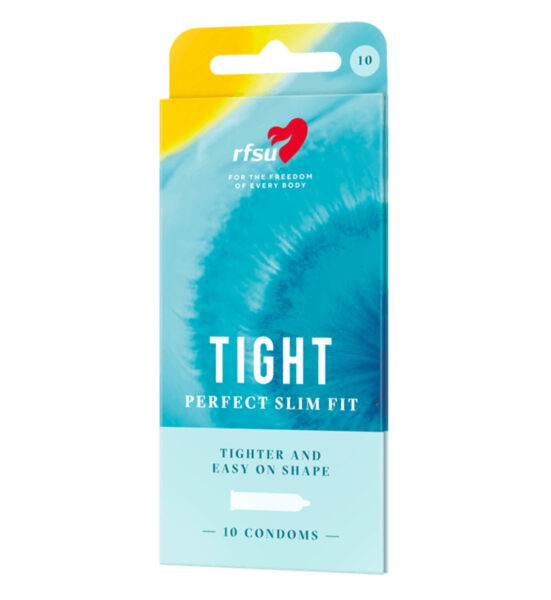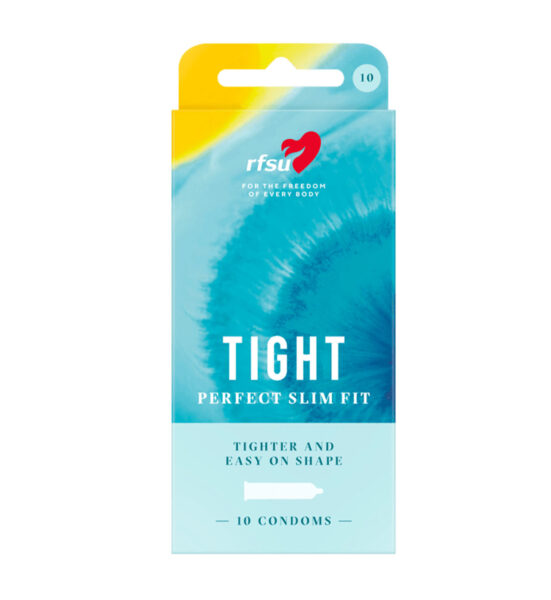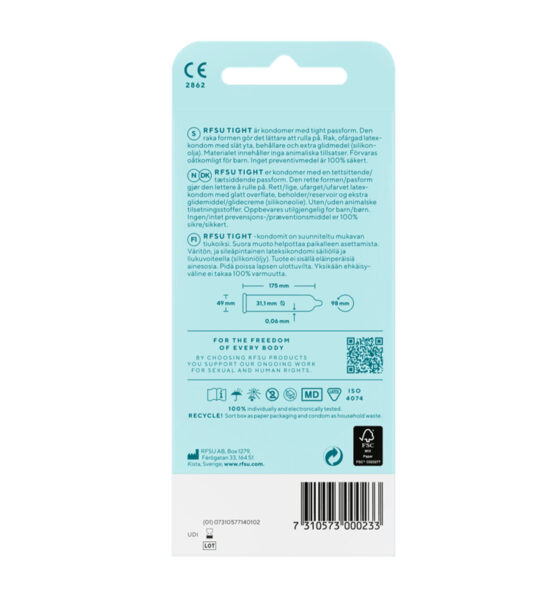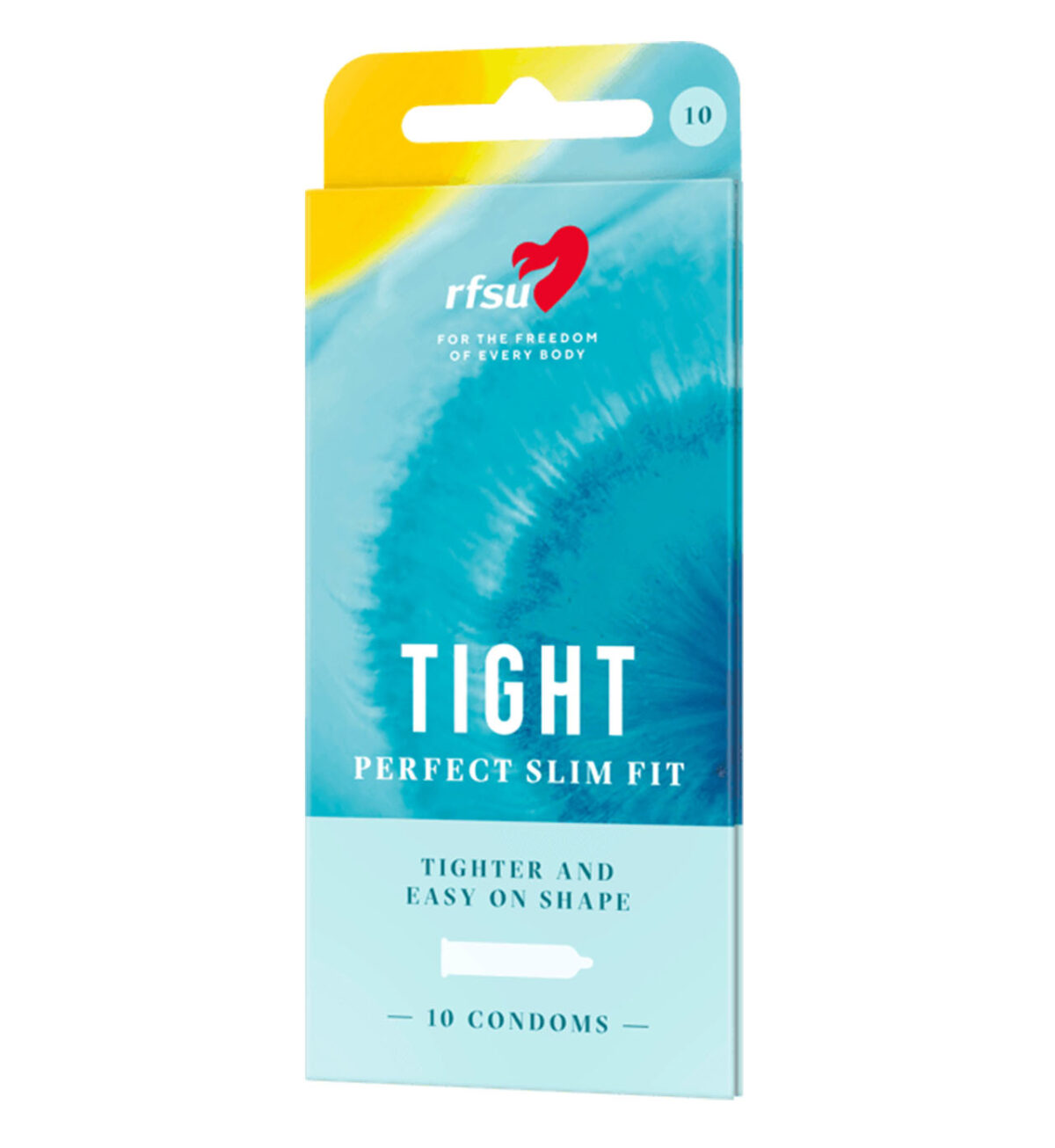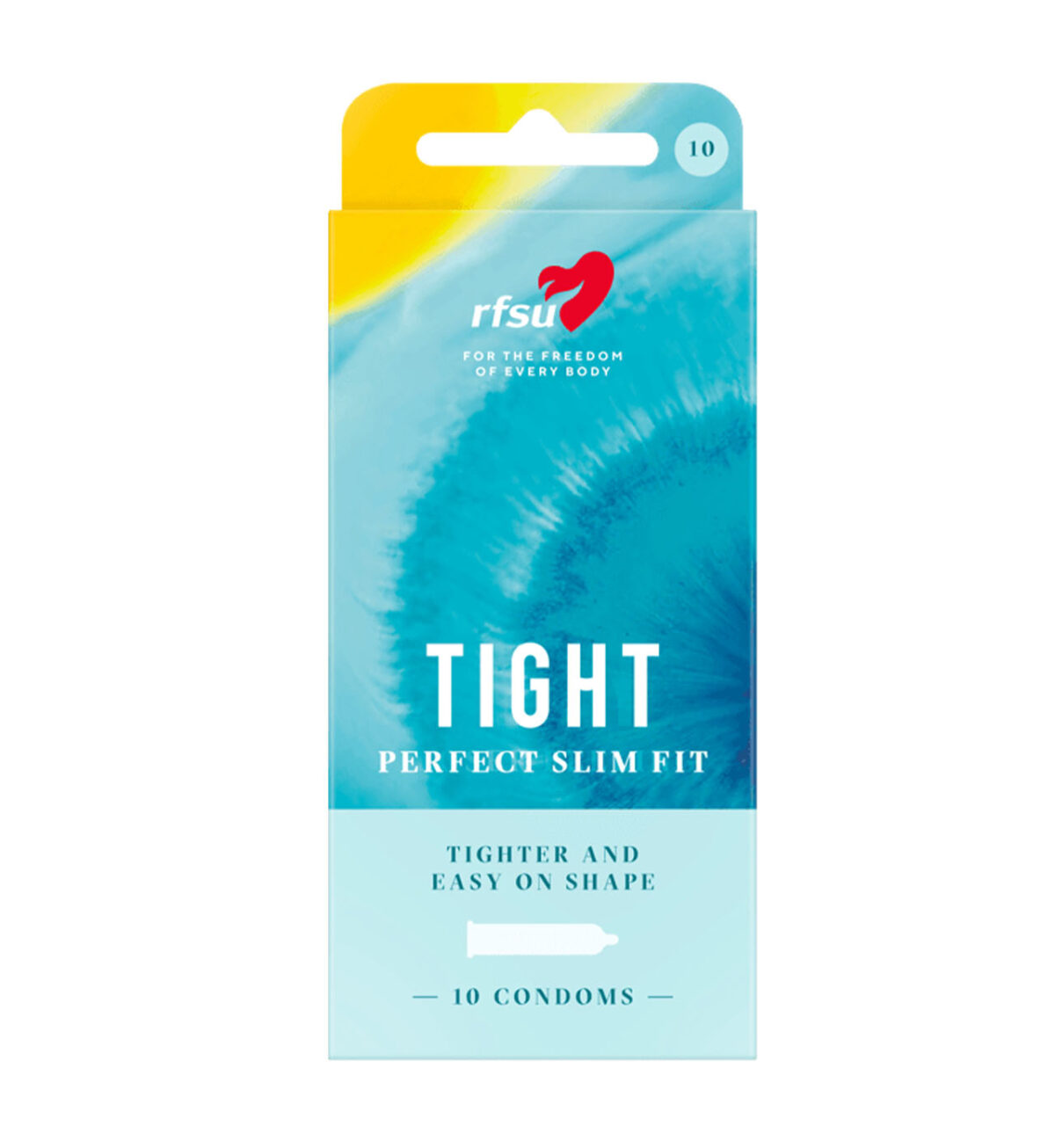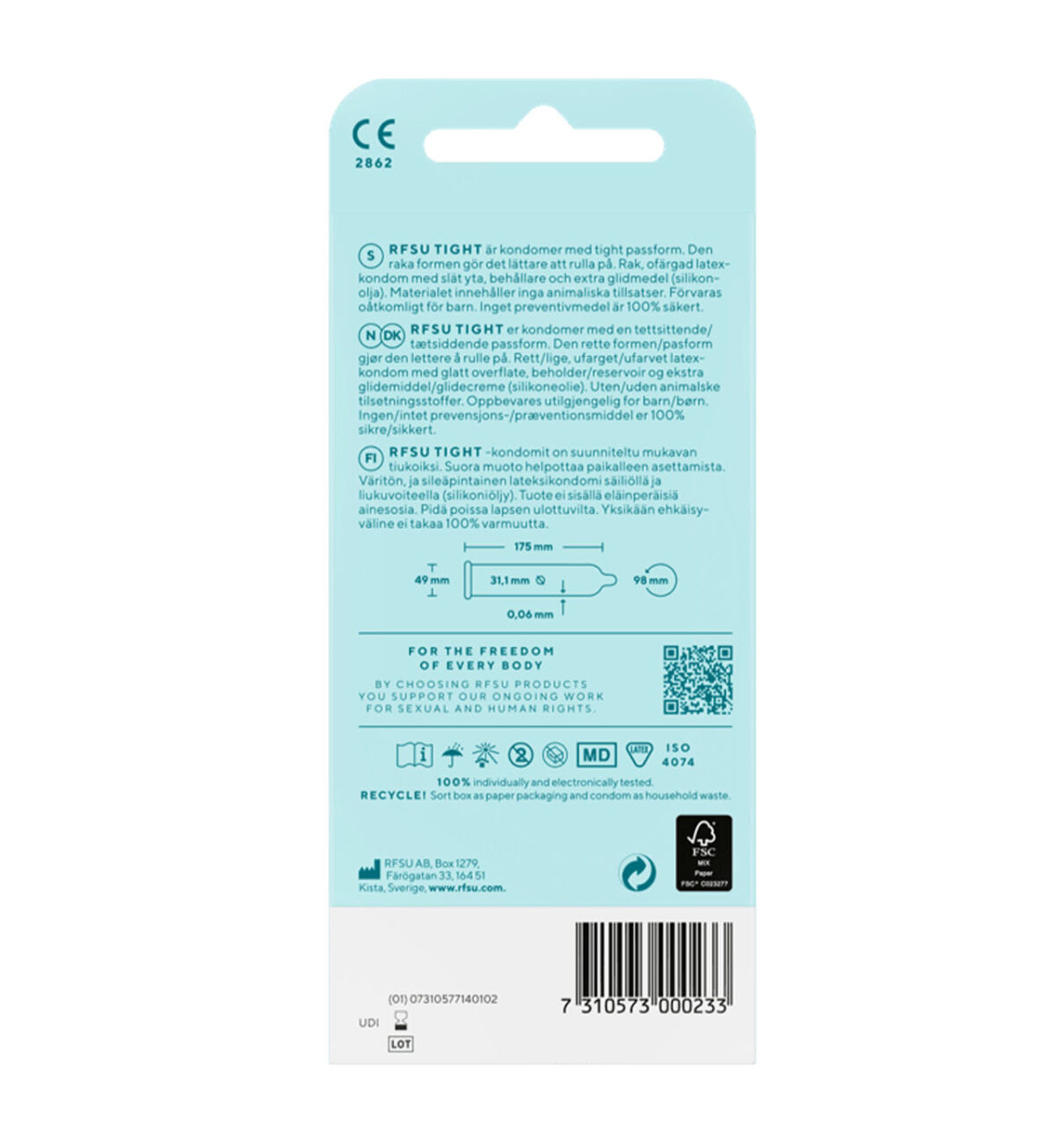-
Read more
![]()
- Latex condom
- Straight-wall (easy-on), easier to roll on
- Colorless, smooth surface, with container
- With lubricant (silicon)
- The material contains no animal additives.
- Hormone free contraceptive
- Condoms are the only contraceptives that protect against both pregnancy and sexually transmitted diseases. No contraceptive is 100% safe.
- If additional lubrication is required, water or silicone-based lubricants are recommended. RFSU has a large assortment to choose from. Oil-based products (e.g. baby oil, vaseline and some pessaries) can damage the condom.
- Used for protected sex (vaginal, anal, oral) or to avoid stains etc.
- May cause allergic reactions in people who are hypersensitive to latex.
- Store in dry, cool conditions, avoid direct sunlight.
- Keep out of reach for children
SOURCE SORTING
- The outer packaging/box is sorted as paper packaging.
- The condom and inner packaging are placed in the bin and sorted with the household waste.
- The condom must not be flushed down the toilet – there is a risk of blockages in the drains.
RELATED PRODUCTS
Lubricant – if you use extra lubricant, it should be water and/or silicone based. Do not use oil-based lubricants such as baby oil or Vaseline. Consult a health care professional or pharmacy for medical use of e.g. ointments, balms, liniments or vagitories.
QUALITY ASSURANCE
RFSU AB has its own accredited laboratory and is certified via Intertek Medical Notified Body (CE number 2862) and quality assured according to;
- SS-EN ISO 13485:2016 (Company)
- MDR 2017/745 (Products)
- SS-EN ISO 17025:2017 (Laboratory)
-
How to use a condom
- Handle the condom carefully. Open the package as shown in the drawing. Avoid sharp objects such as sharp nails, jewelry etc. when handling and opening. First roll up the condom a bit so that it is clearly visible in which direction it should be rolled on.
- Squeeze the container between your thumb and forefinger to remove air. Before intimate contact occurs between the penis and your partner, roll the condom on the erect penis to prevent pregnancy or the spread of sexually transmitted infections.
- Stop and check that the condom is in place.
- Immediately after ejaculation, the penis is pulled out and the condom is carefully held in place at the root of the penis so that no sperm flows out.
- Consult a doctor if you are taking any medicine (e.g. ointment) which, if it comes into contact with the condom, may pose a risk of impaired function.
- If the condom breaks during use, contact healthcare within 72 hours.
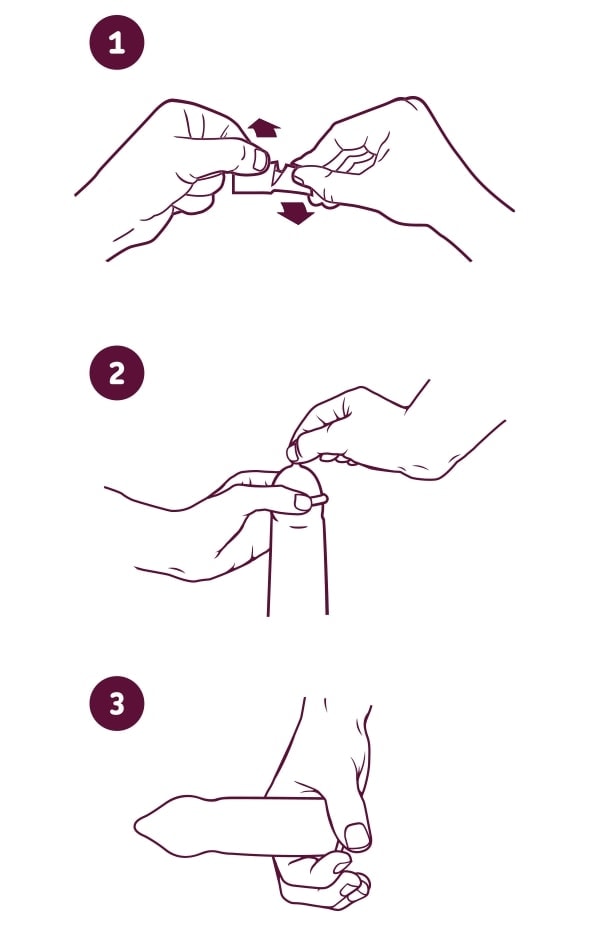
Safety information
The condom is the only contraceptive that protects against both pregnancy and sexually transmitted diseases. Condoms are used by sexually active people as a contraceptive and/or in the prevention of sexually transmitted infections (STIs) such as HIV and other common sexually transmitted diseases. If you wish to use extra lubricant, water- or silicone-based lubricant is recommended. Oil-based products (e.g. baby oil, vaseline and some pessaries) can damage the condom. Keep out of reach of children.
Contraindications
The condom should not be used if pregnancy is desired or if there is an allergy to latex, silicone oil or any of the flavoring substances included. The manufacturer and the competent authority must be informed of all serious incidents that have occurred with the product.
No contraceptive is 100% safe.
When you buy RFSU’s products, you contribute to the work with sexual education and human rights in the Nordics and large parts of the world.
-
Which condom fits me best?
We describe the dimensions of our condoms by specifying length, circumference, width and diameter.
NB! The width is not the same as the diameter. The width measurement applies when the condom is flat.
In addition to these measurements, we also indicate how thin the condom is.
All measurements are in millimeters.
In the top illustration, the condom is 0.06 mm thin, the width is 49 mm, the circumference is 98 mm, the diameter is 31.1 mm, and the length is 175 mm.
Tight is the smallest condom in terms of size.
Sensitive and Grande XL are the two largest condoms in terms of size, although they have slightly different shapes and properties.
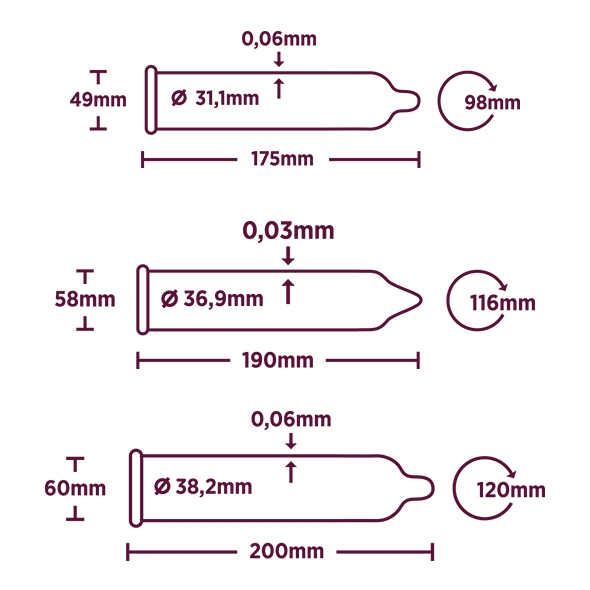
- Fact sheet
-
Q&A
How are condoms made and what are they made of?
Condom production starts on large rubber plantations in subtropical climates. They grow tall trees that contain latex, a liquid rubber. The trees are as tall as palm trees and grow in long rows in the hot sun. Most of the latex rubber is used for car tires and inner tubes, but a small amount is used to make condoms.
During latex tapping, a long cut is made around the trunk. A little below the cut, a small container is suspended and the latex runs down into it. The latex is a white, viscous liquid. Once drained from the trees, it is refined and condensed into a 60 percent concentrate. It is then shipped to the condom factory.
Even before production, the latex is checked for density, stability and purity. Once this is done, the various chemicals are mixed with the latex rubber. In a mill, the mixture is ground into a cohesive mass and then it’s time for vulcanization.
Vulcanization is the most important part of condom production – thanks to it, condoms resist heat and retain their elasticity. It was the American Charles Goodyear who accidentally discovered the vulcanization process in 1839. He tried to improve the durability of rubber by mixing different chemicals with the rubber. One day, while he was mixing sulphur with latex, a splash landed on a hot stove in his laboratory. The heat from the stove gave the latex mixture a new, wear-resistant texture. The strong ‘weatherproof’ rubber had been created. The name Goodyear is most familiar to most people through the car tire manufacturer of the same name. It is thanks to the vulcanization process that the condoms can be made so thin.
Once the latex compound is ready, it is time to mold it into condoms. The molding process is similar to candle casting. A machine holds glass molds that are gently dipped into the latex, allowed to dry, and then dipped again in a couple of batches. The latex flows downwards, towards the top of the condom, making it slightly thicker and stronger than the rest of the condom. The top is also often the part of the condom that experiences the most friction when used.
After molding, the condoms are washed and dried and then powdered with talcum powder to prevent sticking together. They are then unrolled and placed on new molds, made of steel. An electric current is used to test whether there are any holes in the condom. This test is done on each condom.
In the RFSU factory and laboratory, condoms are tested, packaged and distributed.
How long have condoms been around and what were they made of before they started being made from latex?
For thousands of years, people have used condoms. The material has changed. Around 2000 years ago, the Chinese used condoms made of oiled tissue paper. The Japanese are said to have used leather condoms. In Europe, linen cloth was used for a long time to cover the glans, but it chafed and was soon replaced by pig intestines and fish bladders. The answer to avoiding unwanted pregnancies has long been sought in the animal world. Long before the condom, ancient Egypt used a spermicide made from crocodile feces. It was considered perfectly safe.
Views on condoms changed in the 16th century. Columbus’s men brought syphilis to Europe from Haiti, and the condom suddenly became necessary again. The Haitian Indians were resistant to syphilis because they had the disease as children. But Columbus’ men became infected and at the time syphilis was a painful, deadly disease.
It took time for the condom to become widespread. Neither in Germany nor in England was the condom called by its proper name in the 18th century. Instead, it became ‘French letters’ in England and ‘English caps’ in Germany – terms that were used well into the 20th century. The French court physician Astruc is probably the originator of this. He wrote: “He who is to have intercourse puts his penis in an envelope, to protect himself, as against the dangers of an uncertain battle”.
The great 18th century seducer Giacomo Casanova was a big consumer of animal gut condoms. He used to inflate his animal condoms to check that there were no holes in them.
The big condom breakthrough came in the late 18th century. The English King Charles II had a reputation as a womanizer with many children in the countryside. This was not considered very appropriate. So Charles commissioned a doctor to find a shelter. The doctor’s name is said to have been Condom, and he would have suggested that the king use a pouch on his penis. If the story is true, Mr. Condom could be named the father of the modern condom. Those who don’t believe the story of Mr. Condom are more likely to think that the condom is named after the Latin word for container, “condus”.
Sweden’s oldest preserved condom is at the Historical Museum in Lund. It dates from 1813 and comes with special instructions for use. It says that before use, the condom should be boiled in milk and then dusted with flour.
We have the tiremakers to thank for today’s condoms. In 1839, Charles Goodyear invented the vulcanization process. It turned sticky raw rubber into dry and elastic rubber. In addition to car tires, it became possible to make condoms from rubber. These were stretchable and cheaper to produce than gut condoms. Thirty years later, the production and distribution of condoms began in earnest. The advent of birth control in 1900 saw more condoms being used than ever before. But this also increased resistance to condoms.
In 1911, the Contraceptives Act was introduced in Sweden, a law that banned information about condoms and all other contraceptives. Condoms were seen as a threat to marriage and the family. Another argument was that they helped to maintain prostitution.
In Sweden, condoms made from animal intestines were available until the 1930s. The method of making condoms was further developed in the 1930s. Condoms became even cheaper, thinner and more stretchable. The medical profession finally managed to convince Parliament that condoms were the only protection against venereal infection. The Contraceptives Act was repealed in 1938, but the taboo remained for a long time. Condoms were sold under names such as ‘rubber goods’, ‘medical goods’ and ‘controlled goods’ until 1959, when condom vending machines were allowed.
The last remnants of the Contraception Act were repealed in 1970 and condoms were freely sold, advertised and used. The contraceptive pill was allowed to be used as a contraceptive, and in the mid-1970s it had its big breakthrough. As a result, condom use halved in 10 years. People enjoyed themselves without the ‘carbon paper’, but without condoms there were setbacks. As a result, STDs increased sharply.
Condoms began to be marketed by RFSU with a large dose of humor and a focus on the sharp increase in STIs. One of the most high-profile campaigns was “Tonight 80 Swedes will get gonorrhea – condoms are the only contraceptive that protects!”. Read more about our campaigns from the past and recently created campaigns from RFSU.
The motto “condoms are the only contraceptive that protects against both unwanted pregnancies and sexually transmitted infections” still applies. Moreover, the condom is a man’s only means of contraception.
I wonder if you can use condoms if you have sex in a sauna. How are they affected by the heat? I know you shouldn’t store them too hot or in sunlight, but what about when to use them?
You’re absolutely right that condoms shouldn’t be stored in a hot place, but using them in the sauna is fine. It is long-term storage in high heat that makes the condoms age faster than at room temperature, but then we are talking about degrees up to 50C, the time perspective is about 1 year.
I accidentally froze a pack of condoms. The oil around them doesn’t seem to have frozen them, but what about the durability now?
You can rest assured. Condoms are not damaged by severe cold. Just let them thaw at room temperature and they are ready to use. However, strong heat (sunlight, for example) is not recommended. Condoms age with heat and can lose elasticity, which can cause them to break. But as I said, cold is not a problem.
How long does a condom last in its packaging and what is the longest date from manufacture to “best before” in years?
A condom has a shelf life of 5 years from manufacture. We write the expiry date on a label on the packaging, the condoms are always manufactured 5 years before this date.
What lubricant is on the condoms and what does it contain?
All condoms from RFSU, except the condom 17006, are 100% silicone-based lubricant, a drop of silicone lubricant is put on all condoms to prevent them from drying in the package and to make it easier to roll on. It is pure silicone and contains no additives such as glycerine.
I have read that animal matter, casein from milk, is used in the production of rubber and latex, is it in your condoms?
No, our condoms do not contain any animal material and there are no animal tests either. As a vegan, you can use RFSU condoms with a clear conscience.


